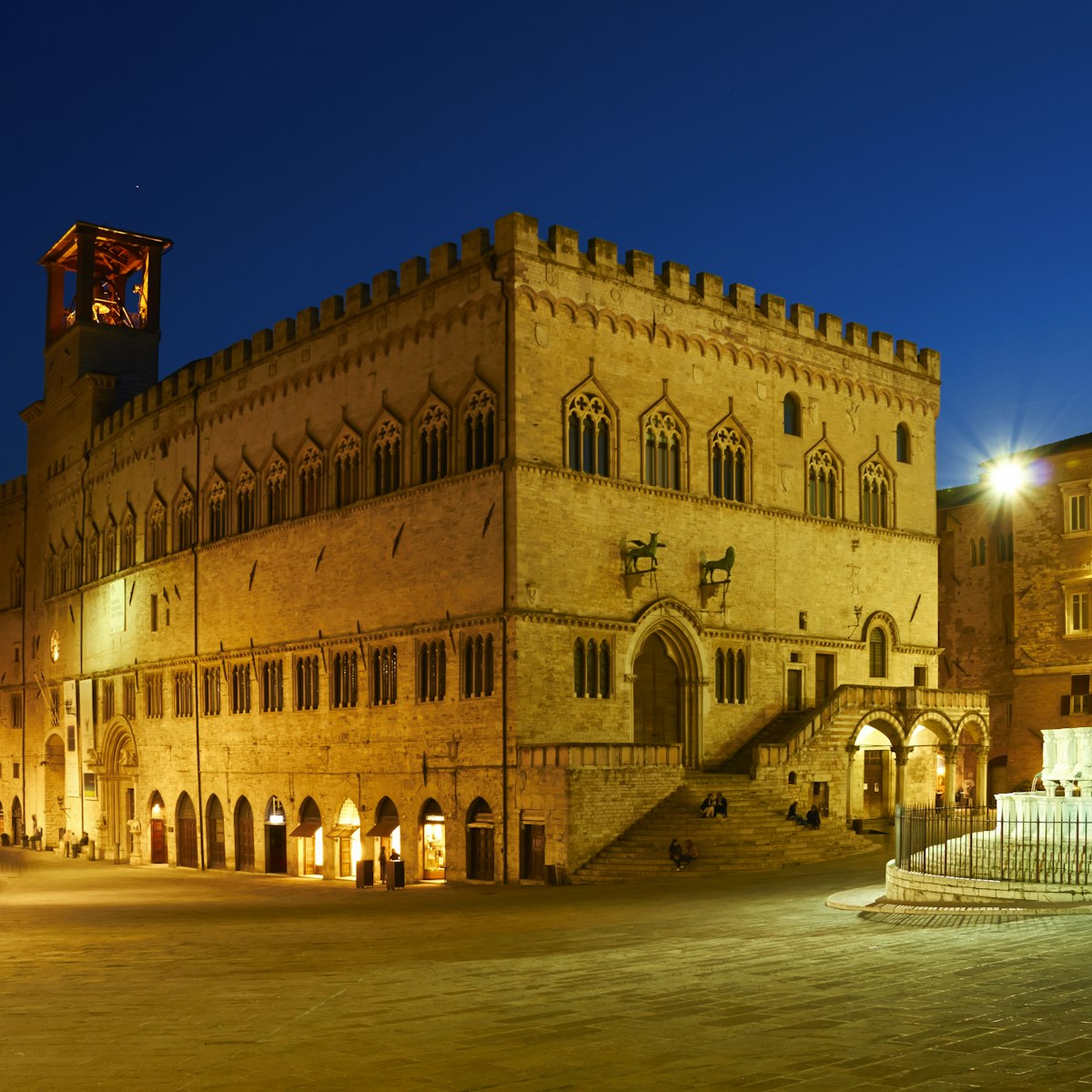The enormous domed church you see as you approach Assisi along the Tiber valley is the 16th-century Basilica di Santa Maria degli Angeli, some 4km beneath Assisi proper. Built between 1565 and 1685, its vast interior houses the Porziuncola chapel, a humble stone church where St Francis first took refuge after he'd renounced his worldly goods, which is generally regarded as the place where the Franciscan movement started. Nearby, the Cappella del Transito stands on the site where St Francis died.
Contact
Get In Touch
Lonely Planet's must-see attractions

1.76 MILES
Visible for miles around, the Basilica di San Francesco is the crowning glory of Assisi's Unesco-listed historic centre. The 13th-century complex is…

20.21 MILES
Although the Basilica di Sant'Ubaldo, perched high on Monte Ingino, is a perfectly lovely church, the real adventure is getting there on the funivia. The…

Galleria Nazionale dell'Umbria
10.37 MILES
Umbria's foremost art gallery is housed in Palazzo dei Priori on Perugia's main strip. Its collection, chronologically displayed over 40 rooms, is one of…

10.38 MILES
Flanking Corso Vannucci, this Gothic palace, constructed between the 13th and 14th centuries, is architecturally striking with its tripartite windows,…

20.98 MILES
Just try to walk through Piazza del Popolo without trying to photograph it from every angle. The rectangular piazza is one of Umbria's finest medieval…

10.37 MILES
In Perugia all roads seem to lead to Piazza IV Novembre. This historic square, flanked by Palazzo dei Priori and the Cattedrale, has been at the heart of…

20.38 MILES
This panoramic piazza, the result of an ambitious 14th-century urban development plan, is medieval Gubbio's showpiece square. Commanding huge valley views…

23.71 MILES
A flight of steps sweeps down to Spoleto's pale-stone cathedral, photogenically set on a graceful hillside piazza. Originally constructed to a Romanesque…
Nearby Assisi attractions
1.73 MILES
Hidden for almost 600 years, St Francis' tomb was discovered beneath the Basilica di San Francesco in 1818 following a 52-day dig, and painstakingly…
1.73 MILES
The lower and earlier of the two churches comprising the Basilica di San Francesco, this basilica was commissioned by Pope Gregory IX in 1228, just two…
1.76 MILES
The upper church of the Basilica di San Francesco was built after the Basilica Inferiore and consecrated in 1253, and the change in style and grandiosity…
1.76 MILES
Visible for miles around, the Basilica di San Francesco is the crowning glory of Assisi's Unesco-listed historic centre. The 13th-century complex is…
1.94 MILES
Set amid lush olive groves 1.5km southeast of Assisi's historic centre, this atmospheric sanctuary is where St Francis is said to have heard the voice of…
1.95 MILES
In among the churches and medieval streets you can still find a few traces of Assisi's Roman past. Extending beneath Piazza del Commune are the remains of…
1.97 MILES
Just southeast of Piazza del Comune, this baroque domed church is a peaceful place for contemplation. It was built by King Philip III of Spain in 1615…
1.98 MILES
Lording it over Piazza del Commune is the imposing form of the Roman Tempio di Minerva. In fact, little remains of the original 1st-century BC structure…







